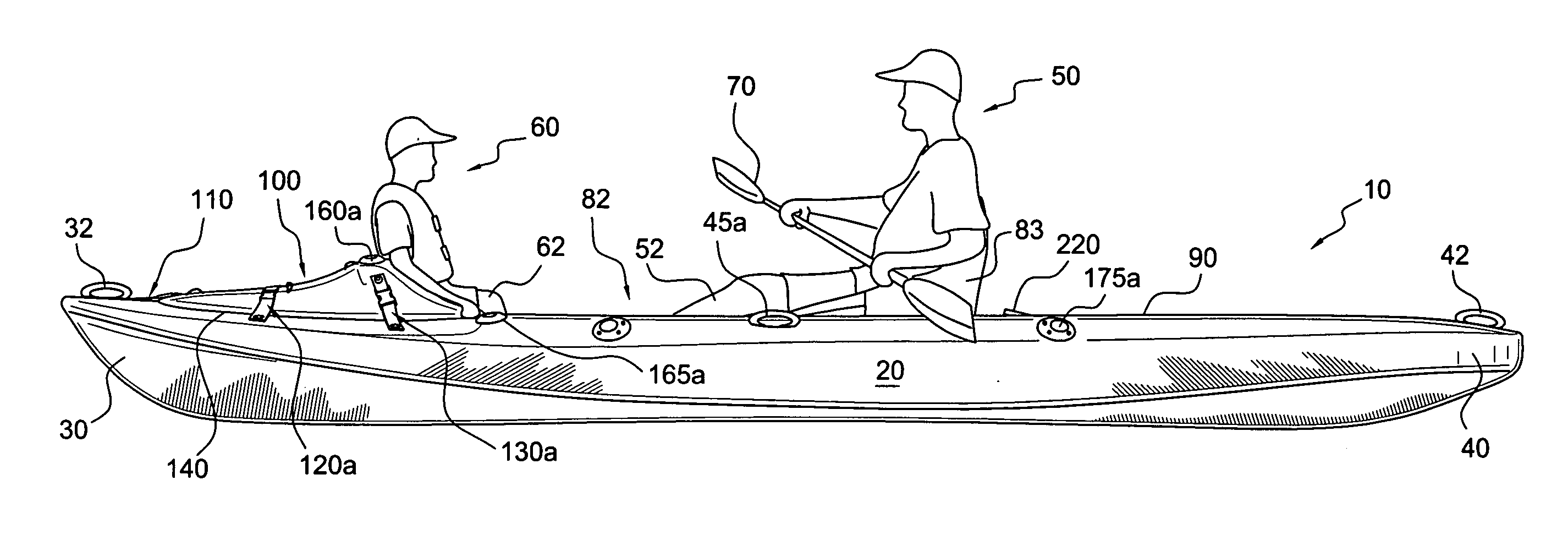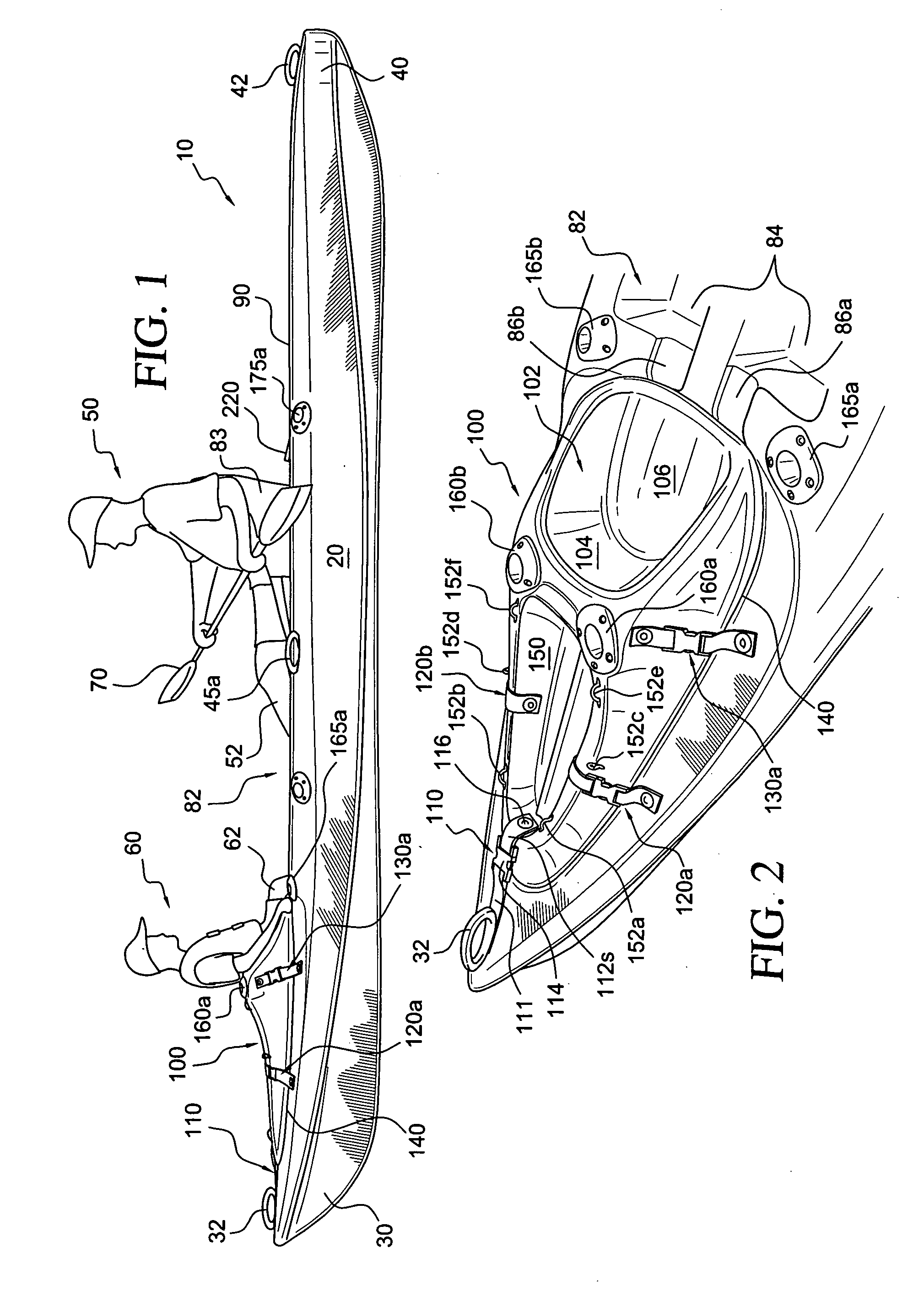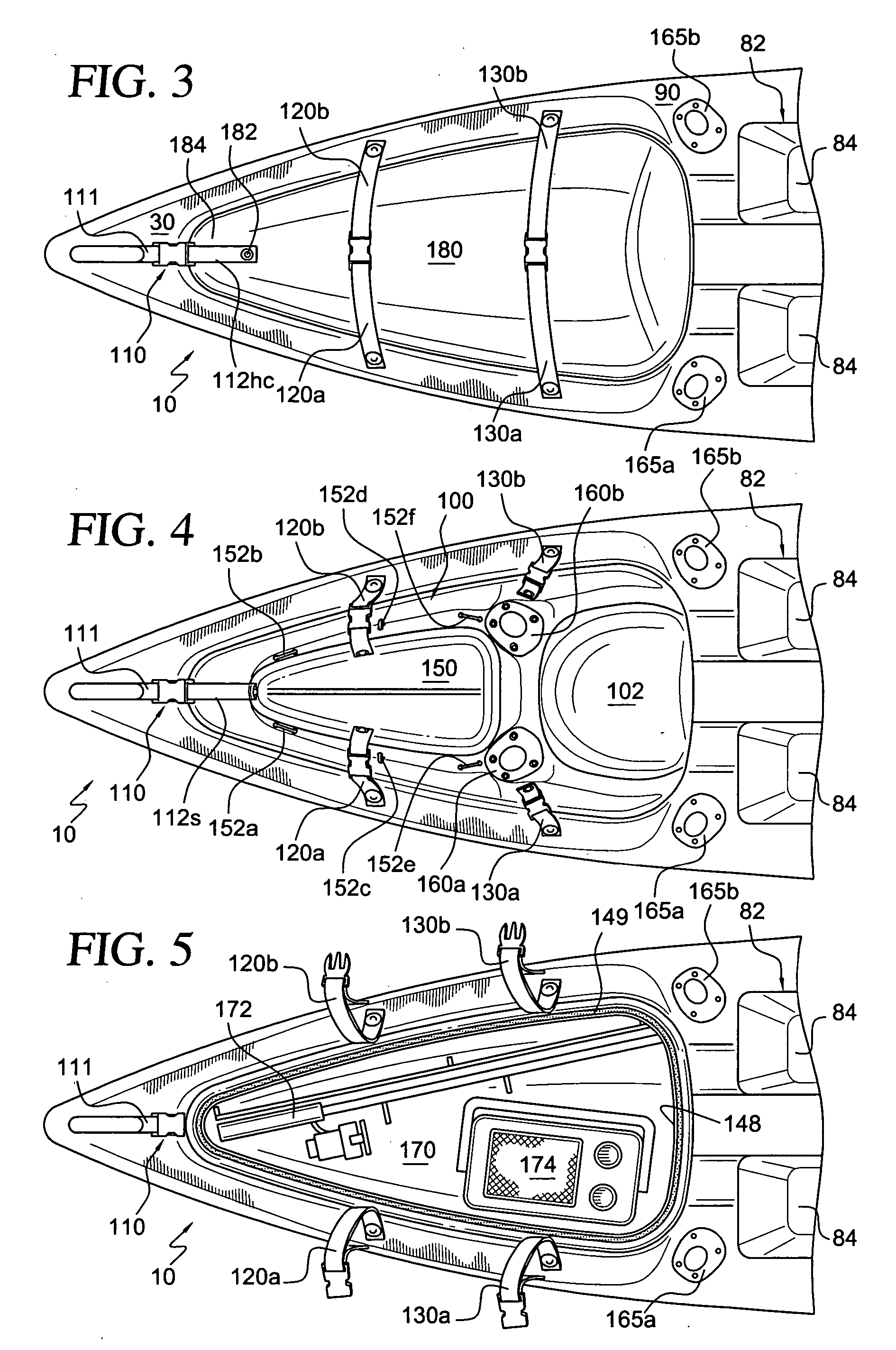Motorized kayak
a motorized kayak and kayak technology, applied in the field of kayaks, can solve the problems of clumsy overall configuration, difficult, or at least inconvenient, and difficult to do with fishing gear,
- Summary
- Abstract
- Description
- Claims
- Application Information
AI Technical Summary
Benefits of technology
Problems solved by technology
Method used
Image
Examples
Embodiment Construction
[0058] In the ensuing discussion, initial emphasis will be placed on features of the invention not relating to the motor, rudder and associated assemblies that are important features of the present kayak design. Once the features shown in FIGS. 1 to 25 have been discussed, attention will be directed to the features of the present preferred embodiment relating to motorized propulsion.
[0059] Referring now to FIG. 1, the kayak 10 of the preferred embodiment of the present invention comprises a hull 20 with a forward portion 30 and aft portion 40. The hull may be constructed of any convenient material that is lightweight, structurally sound and easily formed as desired. I have found that polyethylene provides sufficient strength, and is also inexpensive and easily molded. But there are doubtless other materials that could be substituted, such as other plastics or fiberglass. Those of ordinary skill in kayak building and molding can doubtless apply their expertise to this task, without ...
PUM
 Login to View More
Login to View More Abstract
Description
Claims
Application Information
 Login to View More
Login to View More - R&D
- Intellectual Property
- Life Sciences
- Materials
- Tech Scout
- Unparalleled Data Quality
- Higher Quality Content
- 60% Fewer Hallucinations
Browse by: Latest US Patents, China's latest patents, Technical Efficacy Thesaurus, Application Domain, Technology Topic, Popular Technical Reports.
© 2025 PatSnap. All rights reserved.Legal|Privacy policy|Modern Slavery Act Transparency Statement|Sitemap|About US| Contact US: help@patsnap.com



